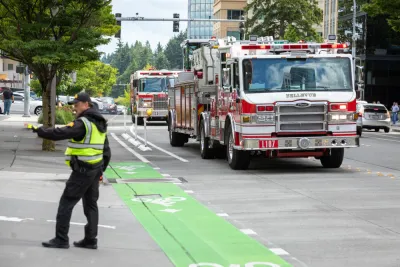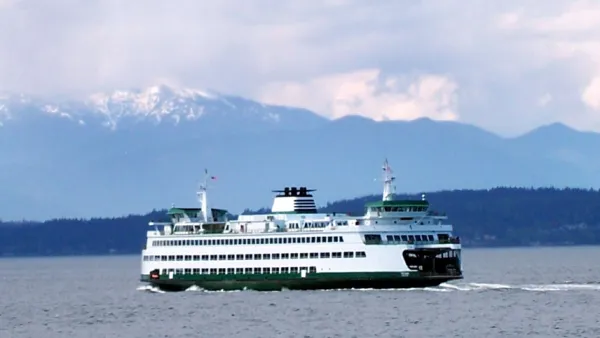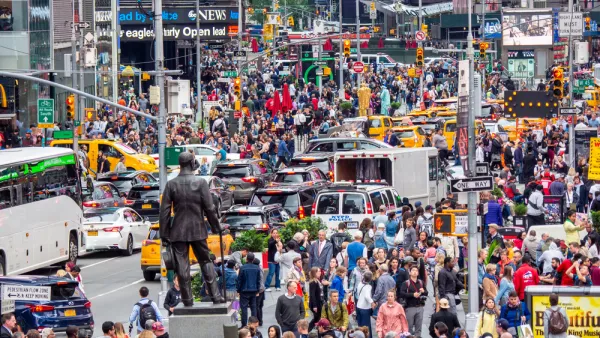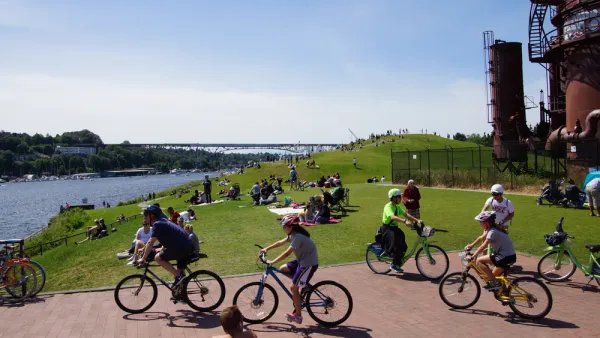Move Ahead Washington, a law approved by the Washington State Legislature earlier this year, is expected to have a huge effect on transportation planning and engineering on state-controlled roads.

Ryan Packer reports for The Urbanist on the details of the Move Ahead Washington law, also known as SB 5974, approved by the Seattle Legislature in March 2022. As explained by Packer, Move Ahead Washington is ambitious in its scope, requiring the Washington State Department of Transportation (WSDOT) to “identify gaps that exist in pedestrian or bike networks, and work with local jurisdictions to fill them” for every state transportation project that started design after July 1 of this year with a cost of over $500,000.
In the law’s own words, “In order to improve the safety, mobility, and accessibility of state highways, it is the intent of the legislature that the department must incorporate the principles of complete streets with facilities that provide street access with all users in mind, including pedestrians, bicyclists, and public transportation users…”
As noted by Packer, the law could have had a huge impacts on large projects completed before Move Ahead Washington took effect, such as the repaving of Seattle’s Lake City Way, also known as State Route 522. Other projects are already subject to the law’s mandate for complete streets, however, such as a project on the aging Omak Bridge across the Okanogan River in north-central Washington.
“Previously the bridge was planned to be refurbished and widened by removing sidewalks, with a separate pedestrian and bike bridge built just to the north. Now, in part due to this guidance, WSDOT is recommending a full replacement of the bridge with a bike and pedestrian facility included,” reports Packer.
FULL STORY: Washington Legislature Makes a Quantum Leap on Complete State Highways

Analysis: Cybertruck Fatality Rate Far Exceeds That of Ford Pinto
The Tesla Cybertruck was recalled seven times last year.

National Parks Layoffs Will Cause Communities to Lose Billions
Thousands of essential park workers were laid off this week, just before the busy spring break season.

Retro-silient?: America’s First “Eco-burb,” The Woodlands Turns 50
A master-planned community north of Houston offers lessons on green infrastructure and resilient design, but falls short of its founder’s lofty affordability and walkability goals.

Test News Post 1
This is a summary

Analysis: Cybertruck Fatality Rate Far Exceeds That of Ford Pinto
The Tesla Cybertruck was recalled seven times last year.

Test News Headline 46
Test for the image on the front page.
Urban Design for Planners 1: Software Tools
This six-course series explores essential urban design concepts using open source software and equips planners with the tools they need to participate fully in the urban design process.
Planning for Universal Design
Learn the tools for implementing Universal Design in planning regulations.
EMC Planning Group, Inc.
Planetizen
Planetizen
Mpact (formerly Rail~Volution)
Great Falls Development Authority, Inc.
HUDs Office of Policy Development and Research
NYU Wagner Graduate School of Public Service




























